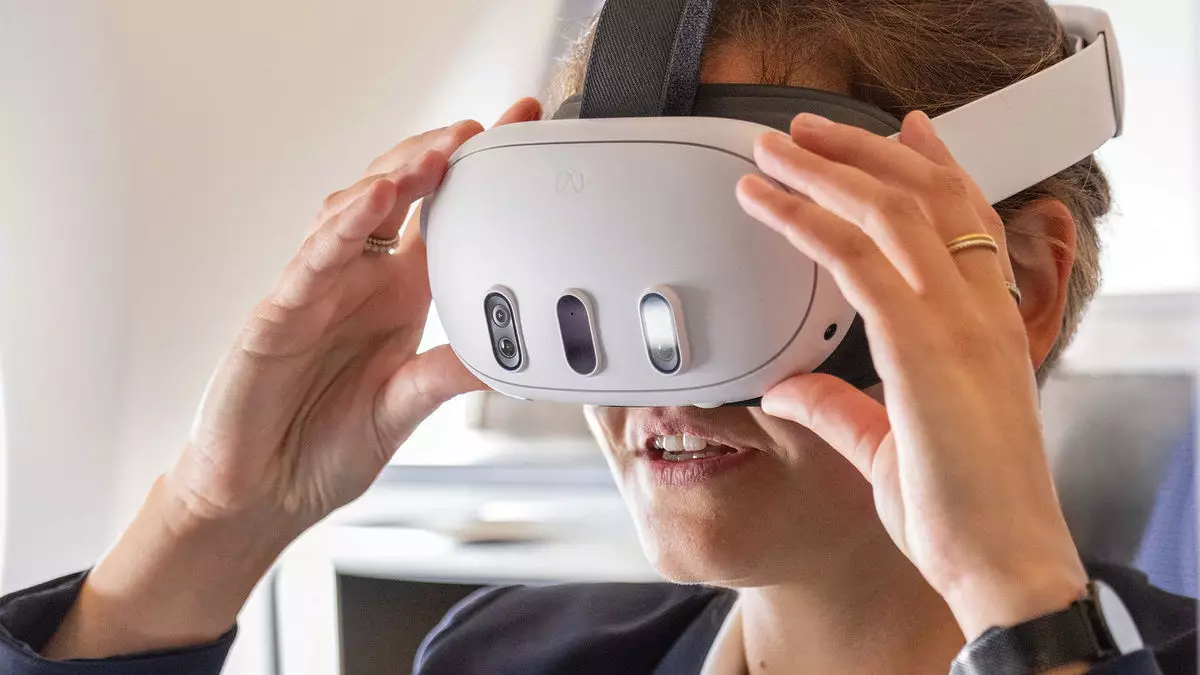Advancements in technology continue to revolutionize the way we experience air travel, especially in terms of entertainment. Recently, Lufthansa has embarked on an innovative journey by introducing Meta Quest 3 mixed-reality headsets to select passengers traveling in its Airbus A350 Allegris business-class cabins. This initiative marks a promising shift in in-flight entertainment and provides an exciting glimpse into potential future air travel experiences.
As of October 11, 2023, Lufthansa commenced trials of this virtual reality (VR) technology on specific transatlantic routes such as Munich-San Francisco and Munich-Chicago O’Hare. While only a limited number of approximately 80 passengers benefit from this new offering, the airline’s strategy hints at a broader aspiration for future expansion. The introduction of mixed-reality headsets, where users can transition from a hybrid of real and virtual environments to fully immersive experiences, ultimately seeks to change the dynamics of in-flight engagement.
At first glance, the concept of watching a movie on a VR headset may not seem appealing when compared to the traditional seatback screens. However, Lufthansa’s tailored virtual offerings shift this paradigm. The experience transitions from merely viewing films on a confined screen to feeling as though one is seated in a lavish cinema. The allure here lies not just in content availability—but in the way experiences are delivered. Passengers can also engage in activities such as meditation, virtual chess, or even watching destination previews that transcend conventional two-dimensional representations.
Imagine gliding over a stunning landscape of Manhattan’s skyline in a virtual helicopter—far more enticing than static images paired with text. Adding an interactive layer, passengers can partake in chess games against virtual avatars, enhancing social interactions within the confined aircraft environment.
The immersive elements offered by mixed-reality technology could reshape how travelers interact during flights. In this setting, passengers don’t just passively consume content; they actively participate in experiences. Although the current offering is limited to business-class passengers, these initial trials could serve as a litmus test for gauging broader acceptance.
Nonetheless, as excitement grows about the VR capabilities, concerns do arise about the practicality of deploying these devices across an entire aircraft. While Bjoern Becker, the head of future intercontinental experience at Lufthansa, acknowledges the transformation potential, he also observes that the economy class cabin atmosphere may not yet be conducive to such innovations.
The aircraft environment, characterized by spatial constraints and the diverse needs of travelers, presents challenges in implementing mixed-reality experiences on a broader scale. Nevertheless, as the technology matures, Becker envisions a future where headsets could become integral to the onboard experience, especially as costs decrease and functionality improves. The potential applications extend beyond entertainment; Becker highlighted the intriguing aspect of virtual merchandising, enabling airlines to generate revenue through in-flight advertisements, potentially integrating product demonstrations into the VR experience.
While Lufthansa takes initial steps into this new frontier, other airlines have adopted a more cautious stance, voicing skepticism regarding the supremacy of seatback entertainment systems. Delta’s managing director for customer experience and Aeromexico’s vice president echoed the sentiment that traditional screens are susceptible to diminishing demand, pointing out that a significant percentage of passengers currently still prefer established seatback entertainment systems.
The exploration of mixed-reality technology in aviation is undoubtedly lit with intrigue and possibilities. There are clear advantages: immersion, interactivity, and personalization that extend far beyond conventional entertainment. However, as we contemplate the road ahead, the aviation landscape reveals a spectrum of possibilities—each airline carving out its pathway. Will Lufthansa’s early venture with mixed realities resonate with the wider market, or will traditional systems retain their grip on passenger experience? Airports and airlines must continue monitoring consumer preferences, discerning between those who crave innovation and those who favor the familiar during their journeys. The future is as much about listening to passenger desires as it is about pioneering advancements—a balance that will ultimately shape the way we experience flight entertainment for years to come.

